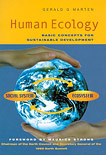Human Ecology - Basic Concepts for Sustainable Development
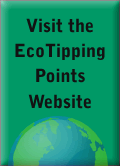
Environmental success stories from around the world with their lessons on how to turn from decline to restoration and sustainability.
Author: Gerald G. Marten
Publisher: Earthscan Publications
Publication Date: November 2001, 256 pp.
Paperback ISBN: 1853837148
Hardback SBN: 185383713X
Information for purchasing this book:
United States/Canada - Stylus Publishing
Elsewhere - Earthscan Publications
Japanese version - Amazon Japan
Back to Human Ecology - Table of Contents
Chapter 3 - Human Population
- Human population history
- Social mechanisms of population regulation
- The population explosion and quality of life
- Things to think about
According to archaeological evidence, the first humans (Homo habilis) appeared in Africa about three million years ago. They used simple stone tools. Humans (Homo erectus) expanded their populations through Europe and Asia at least a million years ago. The modern human species (Homo sapiens) appeared in Africa about 1.3 million years ago and remained only in Africa for many years. Homo sapiens extended its population to Europe, Asia and Australia about 40,000 - 50,000 years ago. The first humans known to live in the Western Hemisphere migrated there from Asia about 13,000 years ago.
Homo sapiens have existed for at least 60,000 generations. The entire human population of the planet was probably less than ten million people during nearly all of that time. About 10,000 years ago humans began to increase their numbers in a few parts of the world, an increase that continued gradually until 300 years ago. By 1700 AD, there were about 600 million people around the world. The population has multiplied to six billion people during the 12 generations since 1700.
Why did the human population increase so rapidly during the past few centuries, after growing so little for such a long time? Have modern science and technology freed humans from population regulation and the limitations of carrying capacity that apply to other animals? This chapter provides an overview of human population history, starting with the small population of hunter-gatherers that constituted humanity for almost all of its history. It describes the expansion of human population as the Agricultural Revolution spread around the globe, and the explosive increase in population that followed the Industrial Revolution. The chapter finishes with implications for the future.
Human Population History
From hunting and gathering to agriculture
The physical and mental abilities of modern humans - and their ecological position in the ecosystem - were formed by several million years of evolution as hunters and gatherers. Humans lived in natural ecosystems that contained many different kinds of plants and animals, only some of them suitable as human food (Figure 3.1a). With their hunting and gathering technology, humans were able to capture only a small part of the ecosystem’s total biological production as food for their own consumption. The carrying capacity for humans was similar to that of other animals, and human populations were no larger than the populations of other animals. Humans probably consumed about 0.1 per cent of the biological production in the ecosystems in which they lived.
This changed after the Agricultural Revolution, which enabled people to create their own small ecosystems for food production. Agriculture in its simplest form first appeared about 12,000 years ago in the Middle East. People encouraged wild plants that they used as food to grow near their dwellings, making food gathering easier. They eventually domesticated some of the plants by selecting individual species with desirable characteristics such as edible parts that were larger or easier to process for consumption. They also domesticated some of the wild animals that they used as food. In this way, people were able to increase the percentage of the ecosystem’s biological production that was available for human consumption (see Figure 3.1B), and the carrying capacity for humans increased.
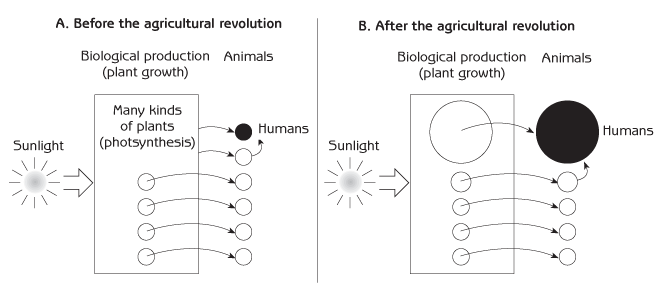
Figure 3.1 - Distribution of biological production among plants and animals in the ecosystem food web
The Agricultural Revolution started in the Middle East because that region had the most plants and animals suitable for domestication. Only a few hundred plants and a few dozen animals among all the species in the world were suitable for domestication, and nearly all of them were domesticated at least 5000 years ago. No major new crop or livestock animal has been domesticated anywhere in the world during the past 5000 years, and none can be expected in the future. Some parts of the world, such as Australia and sub-Saharan Africa, had very few plants or animals suitable for domestication. Agriculture began in those areas only after domesticated plants and animals were brought from other places.
Why did humans wait so long to develop agriculture? The effort that people must expend to form and maintain agricultural ecosystems - preparing the land, planting a crop, caring for the crop, and protecting it from weeds, insects and other animals that want to consume it - requires much more human labour than hunting and gathering. People were probably content to live without agriculture as long as they did not need it. It was convenient to have nature do the work of producing food. However, inhabitants of the Middle East may have felt a strong need to find new ways to procure more food about 12,000 years ago, when rapid change to a drier climate reduced the biological production and human carrying capacity of the Middle Eastern ecosystem.
Over a period of several thousand years agriculture spread through the Middle East to Asia, North Africa and Europe, and arose independently in China, North America, Meso-America, South America and New Guinea. Human populations increased in the areas with agriculture (2 AD in Figure 3.2). New improvements in food production happened in different places at different times, so the human carrying capacity at any one place increased in steps (see Figure 3.3). Any significant new improvement in agricultural technology generated a rapid increase in carrying capacity, and the human population of that region increased to the new carrying capacity over a period of centuries. Once population growth was no longer possible, people felt the stress of limited food supply. This stress, known as population pressure, motivated people to develop additional improvements in agricultural technology, or adopt more productive agricultural practices from neighbouring people. This made the carrying capacity higher, and the upward cycle of human population continued as a positive feedback loop between population and technology.

Figure 3.2 - Growth and geographic distribution of the human population during the past 2000 years Source: ‘World Population’ video, Zero Population Growth, Washington, DC Note: Each dot represents one million people.
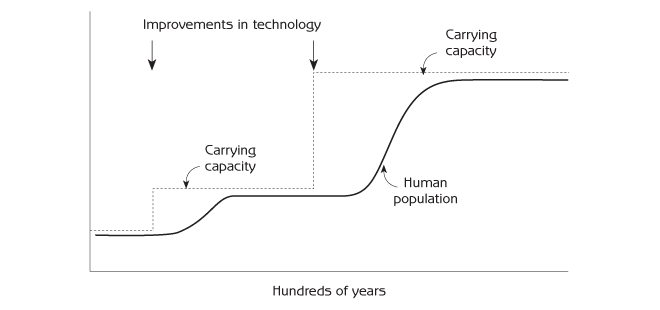
Figure 3.3 - Periodic increases in human population and carrying capacity
The progressive increases in agricultural production generally required more effort to structure ecosystems so that a larger share of their biological production was channelled to human consumption (see Figure 3.4). This is the principle of ‘no free lunch’. Every choice has advantages and disadvantages. Every gain has its costs. One of the costs of more food is more work.
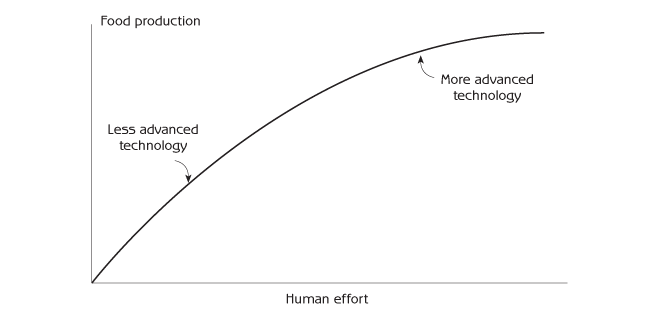
Figure 3.4 - Human effort required for technologies that provide higher food production
The human population of the planet increased gradually for more than 10,000 years after the Agricultural Revolution (see Figure 3.5A). The largest populations were in the great river valleys of India and China. There was a substantial increase in Middle Eastern and European populations during this period. The world population declined by 25 per cent when the plague known as the Black Death swept across Asia and Europe during the 14th century, but it quickly returned to its former numbers during the following century. People in Europe were feeling the stress of a population at the limits of its carrying capacity, but the situation changed as the more powerful European nations embarked on worldwide colonialism and trade during the 16th century. The supply of resources increased Europe’s carrying capacity, and the European population began to grow. Carrying capacity increased even further as the Industrial Revolution gained momentum during the 18th century.
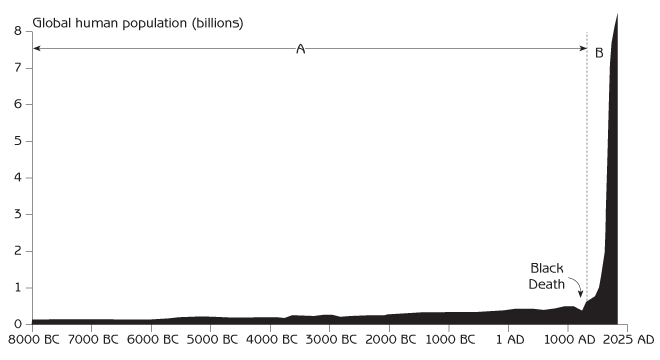
Figure 3.5 - Ten thousand years of human population growth Source: Adapted from Population Reference Bureau (1984) World Population: Fundamentals of Growth, Population Reference Bureau, Washington, DC
The Industrial Revolution
The Industrial Revolution had a major impact on agriculture. Highly productive crops such as wheat, corn, potatoes, sweet potatoes and rice, which were previously restricted to particular regions of the world where they originated, were quickly spread around the world by European trade and colonialism, giving farmers an expanded ‘menu’ of highly productive crops from which to choose. Mechanization gave farmers the ability to structure ecosystems more than had been possible with only human and animal labour. The Industrial Revolution was accompanied by a scientific revolution, as well as new agricultural technologies that increased agricultural production even further. People were able to capture a much larger percentage of the ecosystem’s biological production for their consumption, and carrying capacity increased. The increase in carrying capacity since the Industrial Revolution has been so large and so continuous that the planet’s human population has been able to grow exponentially for the past 250 years (see Figure 3.5, B).
Birth rates were high before the Industrial Revolution. Large families helped to meet the high labour demands of farm life and ensure the survival of children in order to care for parents in their old age. Improvements in public health from the scientific revolution drastically reduced death rates in industrializing countries. Their populations increased rapidly because birth rates remained high. By the 19th century, urbanization and improved survival of children made large families less necessary. Birth rates started to decline as people adopted various methods of limiting family size. The populations of industrialized nations continued to grow rapidly through the 19th and most of the 20th centuries (see Figure 3.6; compare 1950 AD with 1600 AD in Figure 3.2). However, their internally generated population growth was nearly zero by the end of the 20th century. The populations of some industrialized nations continue to grow primarily due to migration from other countries.
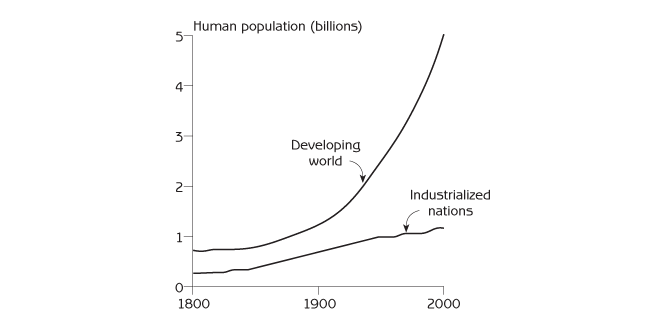
Figure 3.6 - Increase in the populations of industrialized and developing world nations from 1800 to 2000 Source: Data from Population Reference Bureau, Washington, DC 1900 Developing world Industrialized nations
Population ‘ageing’ has recently become a major issue in industrialized nations. There is a change from a rapidly growing population with a high percentage of young people to a population that is growing slowly or not at all with a high percentage of older people. This is reducing the number of economically productive young people compared to older retired people that they must support. ‘Ageing’ is well underway in Japan, it is beginning in Europe and North America, and within a few decades it will become a major issue in developing world countries that reduce their population growth. Some people in countries with an ‘ageing’ population have suggested that birth rates should be increased to provide more young people to support the elderly - a course of action whose short-term benefits would exacerbate the long-term overpopulation problem, resulting in more elderly people to support in the future. Many industrialized nations such as Japan already have populations and levels of consumption that are much greater than they can support with resources from within their own boundaries. They are scarcely aware of the extent to which they have exceeded their carrying capacity because their privileged economic position allows them to draw upon extensive resources from beyond their boundaries.
Developing world populations began to grow rapidly during the 20th century, when modern public health reduced deaths but births remained high. Most of the world’s population growth is now in the developing world (see Figure 3.6; compare 2000 AD with 1950 AD in Figure 3.2). Large numbers are migrating from crowded parts of the developing world to seek better economic opportunities in North America, Europe and Australia. Births began to decline in some parts of the developing world about 20 years ago, but births remain high in many areas. Even if births decline drastically, the developing world population will continue to increase for several generations (2030 in Figure 3.2). Developing world populations have such a large percentage of young people that, even with smaller families, the number of births from the large number of people of reproductive age will greatly exceed the small number of elderly people who die.
The Green Revolution
The most recent increase in human carrying capacity began about 40 years ago with the Green Revolution, which used modern plant breeding to create high-yield varieties of rice, wheat, corn and other crops to increase food production for the rapidly growing developing world population (see Figure 3.7). Higher yields were only possible if the new varieties had ideal growing conditions, such as an abundance of water, optimal fertilizer applications and the use of chemical pesticides to reduce crop damage. Irrigation was expanded on a massive scale, particularly in semi-arid regions. Irrigation not only provided the water necessary for higher yields, it also allowed farmers to grow an extra crop during the dry season. Some of the new varieties were designed to mature quickly so that farmers could fit more crops into a year. More food production meant more work - ‘no free lunch’. While modern agriculture uses machines with petroleum energy to do the work, many developing world families without mechanization must work long, strenuous hours to produce enough food from the small amount of land available to them.
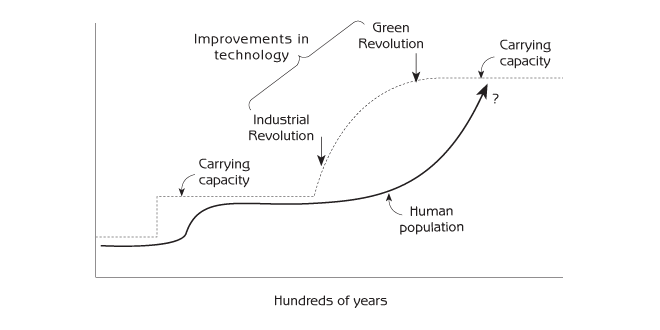
Figure 3.7 - Increase in carrying capacity and human population since the Industrial Revolution
Humans have increased their carrying capacity more than 1000-fold since the Agricultural Revolution by channelling progressively larger percentages of the Earth’s biological production to human consumption. Can we expect another revolution in agricultural technology to elevate carrying capacity even higher than it is today? The answer could well be no. Moderate gains in food production will be possible through fuller implementation of the Green Revolution, particularly in Africa. Genetically modified crops and livestock could increase food production by as much as 20 per cent beyond the gains of the Green Revolution. No one knows whether unforeseen advances in agricultural technology will enable increases in food production beyond our present imagination, but the future seems to offer no further increases with the technologies now in hand.
Many of the gains during recent decades may not be sustainable. Much of the increase in food production has been due to the expansion of agriculture onto lands inappropriate for long-term agricultural use or irrigation from underground water supplies that will soon be depleted. Environmental costs of these gains could be high. Intensive inputs of chemical fertilizers and pesticides for the Green Revolution pollute the water that runs off farms. Genetically modified crops or livestock could have unanticipated detrimental effects on human health or the environment. It was recently discovered that pollen from corn that has been genetically modified to kill insect pests may drift out of cornfields and kill butterflies.
Past gains in agricultural production have been achieved primarily by increasing our share of the Earth’s biological production (see Figure 3.8), not by increasing biological production itself. It is beyond the ability of humans to significantly increase the Earth’s biological production, which depends primarily on regional climates and the quantity of sunlight reaching the Earth. Nor is there much additional scope to increase the percentage for human consumption, because we already control nearly half of the planet’s land-based biological production. Nobody knows exactly how many people the planet can support on a sustainable basis, but there is clearly a limit, and the human population appears to be approaching that limit.
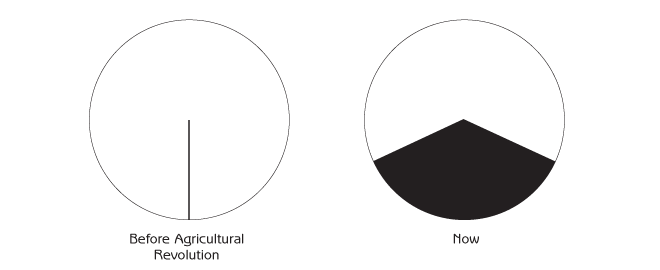
Figure 3.8 - Approximate percentage of the Earth’s landbased biological production controlled by humans
Social Mechanisms of Population Regulation
The deer population cited in Chapter 2 was limited by food supply. If animal populations are limited by their food supply, why do most wild animals look healthy and well nourished? The answer lies in the fact that many animal populations are below the carrying capacity of their environment. Carrying capacity is an upper limit that food supply places on all populations; but it is common for populations to be regulated below the limits of food supply by ecological forces other than malnutrition and starvation. Predators such as wolves and mountain lions kill deer, reducing deer populations below their carrying capacity. Where there are predators, deer have an abundance of food and they are healthy. Unfortunately, people have exterminated these predators in many regions because large predators also kill livestock. Where there are no predators, it is common for deer to be so numerous that many starve during the winter when their food supply is low.
Predation is not the only way that animal populations are regulated below the limits imposed by their food supply. Many animals have social mechanisms to prevent overpopulation. When birds select mates for reproduction, each breeding pair sets up a territory from which it excludes all other birds of the same species. As a consequence of evolution, bird territories have a size that is large enough to provide plenty of food for the breeding pair and their young. If there is not enough space to provide an adequate territory for all the birds in a population, the extra birds do not get territories and they do not reproduce. In addition, birds have physiological feedback mechanisms to reduce their egg production if food becomes scarce. Some species of birds even appear to have social displays to assess their population, with hormonal responses to the displays that reduce egg production if the population is too large.
Many other animals, including humans, have similar mechanisms to keep their populations within the limits of their food resources. The evolutionary origins of human territoriality and its function for population regulation in human societies can be seen in the social behaviour of monkeys and apes that live in groups and exclude all other individuals of the same species from their territory. Although the detailed social organization of monkeys and apes varies enormously from one species to another, it is common for males to be hostile when encountering members of another group, killing infants in the other group if they have the opportunity. When food is abundant, females with young tend to stay in the middle of their territory, where they are safe from dangerous encounters with neighbouring groups. However, if food is scarce, females can be forced to seek food near the edge of their territory, where their young are vulnerable. Moreover, females under stress frequently neglect their offspring. As a consequence, infant deaths tend to increase when there are too many individuals for food resources in the territory, and the population declines. This is a negative feedback loop that keeps the population within the limits of its food supply.
Figure 3.9 shows how traditional human societies have used negative feedback to keep their populations below carrying capacity so that they are not regulated by starvation. When human populations grow close to their carrying capacity, it is common for land, food, irrigation water or other resources to become scarce. An increase in population leads to a reduction in resources. This leads to human actions that reduce the population by reducing births or increasing deaths (usually infant deaths). In many societies, particularly on islands, the feedback loop in Figure 3.9 has been a conscious one. In other societies the mechanisms for reducing births may have been part of the cultural fabric without a conscious connection to population and carrying capacity. Whatever the details, the negative feedback loop has been powerful. High death rates - based on an image that the life of primitive humans was ‘short and brutish’ - are not sufficient to explain the infinitesimally slow increase of human population for more than 50,000 generations.
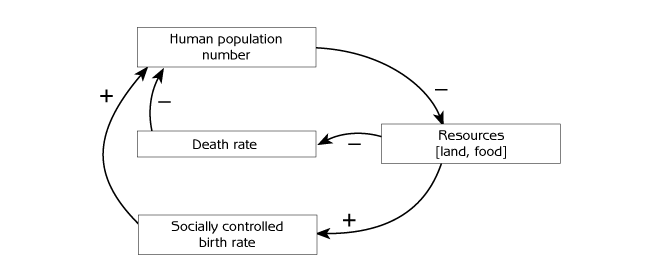
Figure 3.9 - Negative feedback loops for social control of human population
Humans of the past survived within small-scale territories. Many traditional societies have territories of similar sizes today. Inhabitants of small-scale territories have a detailed knowledge of their area and the number of people it can support, and employ traditional birth control methods to keep their population within that limit. Breast-feeding makes a major contribution to birth control because women are generally not fertile during the period in which they are nursing a baby, and in some cultures they sleep apart from their husband during this time. The traditional custom of breast-feeding a baby for three to four years provides a natural spacing of children. Unfortunately, this custom is disappearing as modern mothers bottle-feed their babies instead of nursing them.
Traditional population regulation is also supported by the marriage structure in some societies. For example, the husband in a polygamous society, a common form of traditional human social organization, can rotate sexual activity with his wives so that each wife becomes pregnant only once every two to three years. Traditional inheritance customs in monogamous societies can have a major effect on marriage and birth rates. For example, in some cultures it was common practice for only one son to inherit the family property. A son with inheritance could afford to marry, but the other sons without inheritance could not. This created a pool of unmarried women, who had far fewer children than married women - similar to birds that do not reproduce if they fail to secure a territory.
Traditional societies use local herbs to prevent pregnancy or induce abortion. Infanticide was common throughout the world until the 20th century, and it is still common in some regions. People kill unwanted infants in order to space their children or when they are unable to care for them because of poverty or food scarcity. Because girls have less social value than boys in many cultures, infanticide is directed primarily toward females, a practice that reduces the reproductive capacity of the subsequent generation more effectively than male infanticide. With recent advances in identifying the sex of unborn children, abortion is also directed toward females in some regions. Modern contraception methods now offer attractive alternatives to abortion and infanticide as a means of family planning.
Territorial conflict has a long-standing role in human population regulation. For example, if the population of a village is pushing the limits of its resources (for example a lack of food, land or irrigation water), it may try to use the resources of a neighbouring village or resources of disputed ownership near the village boundaries. This can set in motion a chain of effects that reduces births. Emotions can be high during village territorial conflicts. Violence is not unusual, although deaths are usually few. In all societies, traditional and modern, births often decline during periods of territorial conflict because couples wait for ‘better times’. Some traditional societies prohibit sexual activity during periods of conflict.
Territoriality remains a significant part of human behaviour in the modern world, the most important territories being nations. However, most nations are too large to provide the negative feedback loops between population and carrying capacity that smaller-scale territories provided in the past. The carrying capacity of an entire nation is obvious to no one, particularly if the nation imports large quantities of food from outside its boundaries. Instead of keeping their populations within bounds, modern nations have often encouraged population growth because of the military advantages of larger populations. Territorial behaviour becomes more perverse than functional when nations use modern weapons and well-organized armies to escalate territorial conflicts into wars that kill thousands or even millions of people without providing the ecological benefits of territoriality as in the past.
The Population Explosion and Quality of Life
The quality of life for today’s massive human population is severely limited by the finite capacity of ecosystems to provide food and other essentials for human use. The land and water resources of planet Earth are simply not enough for so many people. Rapid urban growth in recent decades has created heavy demands for materials and services from surrounding ecosystems. The consequences are particularly severe in many developing world cities, which have fallen hopelessly behind in providing housing, a safe water supply, garbage collection, sewage disposal and other basic services to their expanding populations. The prospects for a better future are diminishing rapidly as the human population continues to grow at an alarming rate.
The most serious consequence of human overpopulation is the heavy demand on ecosystems for food. There is not enough food for everyone when a population overshoots its carrying capacity (see Figure 2.11) - a problem that cannot be solved entirely by more equitable food distribution. The situation can deteriorate when overpopulation sets in motion a chain of effects through ecosystems and social systems that reduces carrying capacity instead of increasing it. This can happen when food shortages force people to produce more food by planting crops or grazing livestock on inappropriate land and with an intensity that the land cannot sustain. Erosion, depletion of soil fertility, accumulation of toxic chemicals and numerous other forms of soil damage can cause food production - and carrying capacity - to decline in a vicious cycle (positive feedback loop) of inadequate food supply and inappropriate land use.
When this happens, it is common for people to migrate to another region where conditions are better. The developing world now has millions of environmental refugees migrating to cities because they can no longer survive in the rural areas where their families lived for generations. If people cannot migrate, and they lack the wealth to buy food from elsewhere, malnutrition increases deaths (particularly among young children), and the population declines much like a deer population that overshoots its carrying capacity. This grim scenario is not hypothetical. It has happened on a local scale thousands of times in the past, and it has happened more recently in North Korea and several parts of Africa. A descending spiral of hunger and land degradation is today occurring in the mountainous regions of Asia where too many people occupy land with a limited potential for food production.
Even where hunger is not a problem, the social costs of having to produce more food extend further than might be realized. High-yield varieties require higher expenses for chemical fertilizers and pesticides than locally adapted traditional varieties that farmers used before the Green Revolution. The expenses are worthwhile if yields are high enough, but high expenses can also drive farmers into debt. Economic equality has declined throughout the world as farmers lose their land due to debt, and wealthier farmers or agribusiness corporations acquire more land. Another social cost of producing large quantities of food comes from the fact that much of the increase in Green Revolution food production is achieved by means of more crop cycles in a single year. This results in correspondingly more work, with dramatic consequences for the social system. The heavy labour demands of Green Revolution agriculture leave less time for community activities. There is less time to help neighbours during peak labour periods, less time for community projects such as maintenance of terraces or irrigation ditches, or construction of homes for newlyweds (where this is still the custom), and less time for religious or other festivals that contribute to community solidarity.
Overpopulation increases competition for limited resources. Disputes over access to shared resources are now commonplace, for example irrigation water or hydroelectric power from rivers that flow through several countries, or marine resources in the ‘extended economic zones’ (within 320 kilometres of the shoreline) of more than one nation. Disputes over valuable natural resources have caused numerous wars in the past and can be expected to cause more in the future as competition for limited resources intensifies. However, the main source of violence at the present time is conflict within nations between different ethnic groups competing for the same resources. Wars of regional autonomy or independence have proliferated through many parts of the world in recent years. One of the main issues in these conflicts is whether resources will be controlled by majority ethnic groups or the power elite who control the nation - or by regional populations who live in the area.
What can we do about the population explosion? The main message of this chapter has been that the Earth’s human population is rapidly approaching its carrying capacity, with no major increase in the carrying capacity expected in the foreseeable future. Although people would do best to keep their population comfortably within the limits of the present carrying capacity, the momentum of the population explosion rules out that choice for now. The best that we can hope for is to slow down the increase in population as quickly as possible. Because most of the world’s population growth is now in the developing world, the key to stopping the population explosion lies in that region.
There is a common belief that economic development must precede a decline in births in the developing world, as appeared to happen with the economic development of industrialized countries. However, recent studies have shown that the decline in European birth rates was associated more with access to birth control and changing attitudes about family size and the social acceptability of using birth control. Recent trends in some developing world countries have shown the same. While economic development and education, particularly for women, can contribute to lower birth rates, it is not necessary to wait for them. Many developing world women, rich and poor, want small families through immediate access to family planning. The main thing they need is access to modern birth control methods and sound information on how to use them.
Things to Think About
- Find out the human population of your nation a hundred years ago? What is the present population? What are the birth and death rates? How do the present birth and death rates compare with a hundred years ago?
- How many people do you think your local area (or your nation) can support? Do you think your local community has too few people? Too many? Just about right? How about your nation? What are the advantages and disadvantages of having more people or less people? What are the connections between the number of people and quality of life?
- Ageing populations are a major concern of industrialized nations at the present time. There is a trend toward a larger number of retired people to be supported by a smaller number of working-age people. Some nations are considering policies to encourage a higher birth rate so they will have a larger work force. Do you think this is a good idea? Can you think of other ways to deal with the ageing problem?
- What happens when human populations overshoot their carrying capacity? Can you think of concrete examples?
- Millions of “economic refugees” move from poor nations to wealthy nations every year. Some citizens of the wealthy nations think that immigration should be strictly controlled. Other people think there should be free movement of people throughout the world. What do you think? What are the advantages and disadvantages of each policy?
- Should wealthy nations that have controlled their population growth provide food assistance to poor nations that have a high population growth rate? Should wealthy nations provide other kinds of assistance to nations that do not have enough food?
